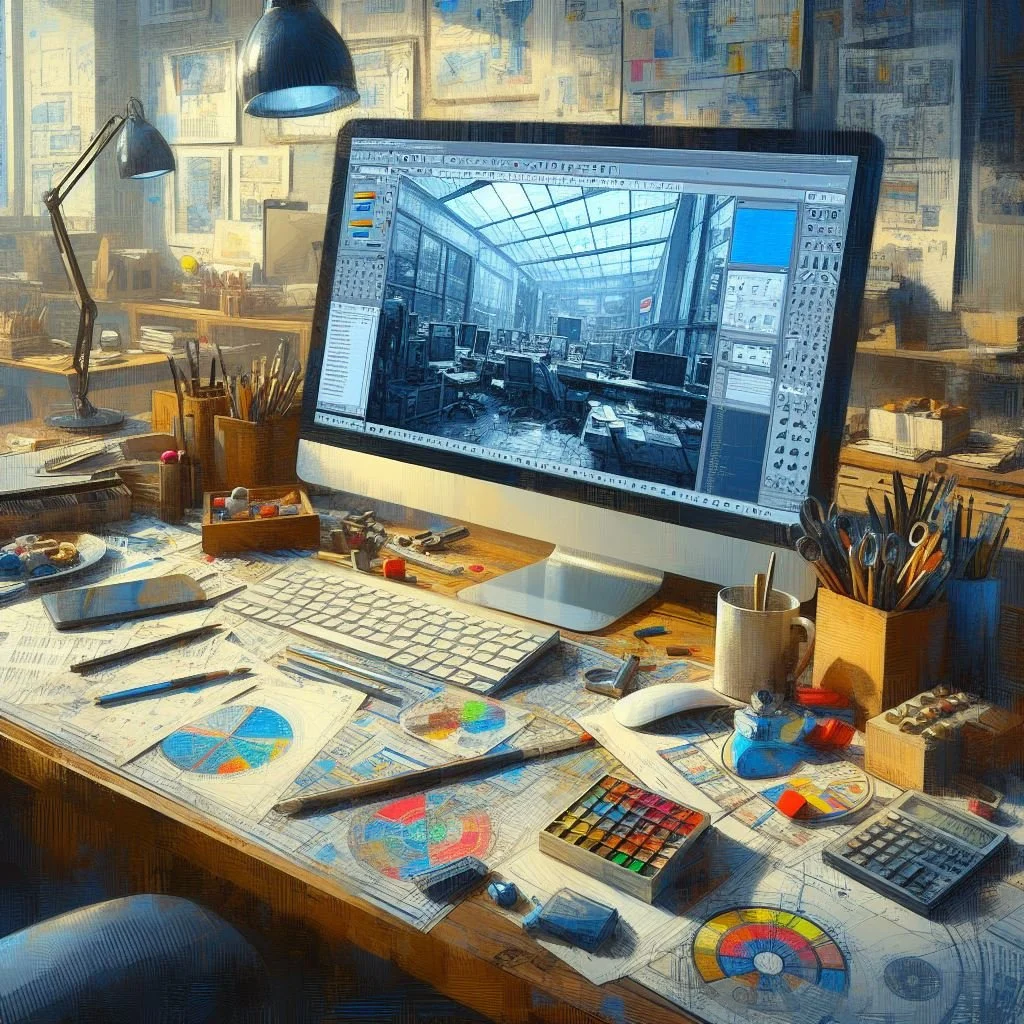From Sketch to Spectacle: Why SketchUp is an Architect's (and CGI Artist's) Ally
Here at Arkviz, we take architectural dreams and turn them into digital realities. But before our CGI artists work their magic, a clear and communicative starting point is crucial. That's where SketchUp comes in.
This intuitive 3D modelling software might seem simple at first glance, but for architects and, by extension, CGI teams, it's a powerful tool that bridges the gap between concept and creation.
Why Architects Love SketchUp (and Why You Should Too):
Intuitive Interface: Unlike some complex 3D modeling programs, SketchUp boasts a user-friendly interface that allows architects to quickly develop and refine their ideas. This ease of use translates to faster concept generation and earlier collaboration with CGI teams.
Speed & Efficiency: SketchUp excels at creating basic 3D models quickly. This makes it ideal for architects to explore design variations, test layouts, and iterate on concepts before moving into more detailed drafting software. This rapid prototyping allows CGI teams to get involved in the design process earlier, fostering a more collaborative workflow.
Extension Powerhouse: SketchUp's extensive library of extensions empowers architects with specialized tools for architectural elements, materials, and features. This vast ecosystem ensures they can create models that accurately reflect their vision, saving them time and effort. These extensions also provide a familiar environment for CGI artists used to working with 3D assets from SketchUp.
Direct Path to CGI: SketchUp integrates seamlessly with many popular 3D rendering software programs used by CGI companies. This allows us to import the 3D models directly, eliminating the need for time-consuming reconstruction or re-modeling. With the core structure established, our CGI artists can focus on adding detail, textures, lighting, and other creative flourishes to bring the architectural vision to life.
Beyond the Blocky Basics:
While SketchUp might be known for its simple geometry aesthetic, it's a powerful tool for architects under the hood. Here are some of its hidden gems:
Shadow Studies: Visualize how natural light interacts with a building throughout the day. This is crucial for architects to optimize building design and helps CGI artists create lighting effects that reflect real-world conditions.
Material Applications: Apply realistic textures and materials to the 3D model, giving architects a better sense of the final aesthetic and providing a foundation for CGI artists to create hyper-realistic renderings.
Client Communication: The simple and clean visuals generated by SketchUp are perfect for communicating design ideas to clients. This fosters better understanding and allows for earlier feedback, saving time and rework down the line.
In Conclusion
SketchUp might not be the most high-fidelity 3D modeling software, but for architects and CGI teams working together, it's a game-changer. Its speed, intuitive interface, and extensive extension library streamline the architectural design process and pave the way for smooth collaboration. So next time you see a stunning architectural CGI rendering, remember, the journey likely began with a quick and efficient SketchUp model.

